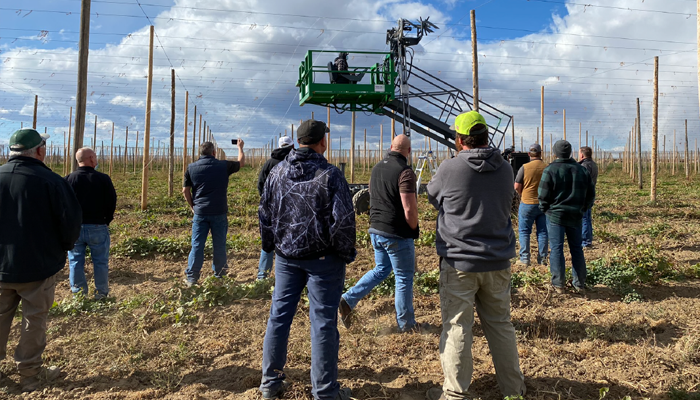Software has become an important tool for growers, improving farm efficiency and providing accurate and timely information to make better, more profitable decisions. However, sometimes we forget that we must run software on something. From the inception of our flagship product, the FairPick scale, we realized that the combination of hardware and software would be key for our products to work well on the farm. The device that would run our labor tracking software would need to be rated for outdoor use and designed for industrial applications.
When we started talking to more growers, we learned that the FairPick scale offered a great solution for tracking harvest and produce picked but did not offer an easy way to track other employee time and piecework jobs. The ability to electronically record all work on the farm was the next step. This prompted our search for a manufacturer that offered industrial handheld computers to run our Android applications. Our partnership with Cipherlab has allowed us to deliver several models of handhelds over the last four years that meet our expectations and the needs of our customers.
Cipherlab manufactures mobile devices that offer the latest and greatest technology for many industrial applications. By using Cipherlab handhelds, it ensures that our software is compatible with the operating system of the device. It also allows our software to “talk” to other components on the device (sound, barcode scanner, NFC scanner, etc.). Technology changes so rapidly that it can be challenging for a software provider to guarantee that their applications work on all devices. We know that growers cannot tolerate much downtime with their technology, so pairing hardware with our labor tracking and product tracking software can make our systems more reliable.
Here are some other benefits of using Cipherlab handhelds versus typical cell phones to run 2nd Sight software:
- Built-in barcode scanners with physical scanner button for ease-of-use
- Hot-swappable batteries, spare batteries, and charging docks for extended workdays
- AppLock program that allows an admin to permit only certain apps be opened which prevents misuse and abuse of the device by employees
- Wi-Fi or SIM card capabilities for full data upload flexibility
- Built-in NFC reader that scans RFID cards and tags so that employee badges can be sturdy, get dirty, and get wet (unlike barcode badges)
- Ability to install micro SD cards for additional data back-up If the handheld is damaged
In 2020, we released the RS51 handheld for our FairPick Lite and FairTrak systems. This update to the RS50 includes an improved operating system and more processing power which means that it can handle a lot of data quickly. In 2021, we will release the RS35 handheld for use with our InstaCaliper and TallyTrak system. The RS35 will also boast more processing power and its integrated barcode scanner will now support 2D barcodes.
Ready to learn more about how our hardware and software work together as an integrated solution for your farm, nursery, or greenhouse? Send us an email or give us a call and we would be happy to explain why paying a little more for hardware will pay off when you need it most!
 English
English  Español
Español 
